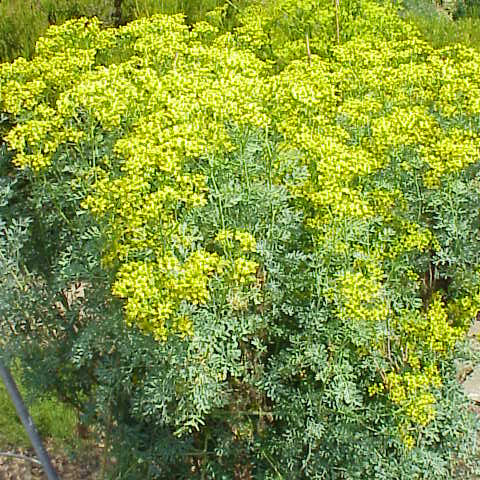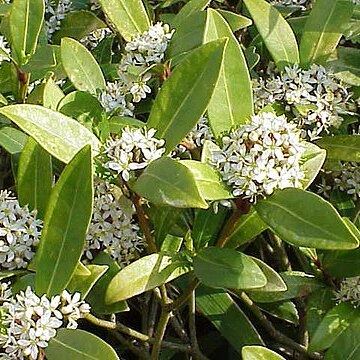Shrubs or trees or sometimes herbs, sometimes scrambling or scandent, sometimes armed, with pellucid glands containing aromatic, volatile oil visible from surface of at least the leaves, young branchlets, inflorescences, flower parts, pericarp, or cotyledons in seed. Leaves alternate, opposite, or whorled, simple or variously compound, exstipulate or rarely with stipular excrescences. Flowers bisexual and/or unisexual, actinomorphic, hypogynous, usually 3–5-merous. Sepals (rarely lacking) distinct to completely connate. Petals distinct or sometimes coherent or connate for part of length. Disc (sometimes lacking) intrastaminal, nectariferous. Stamens equal to or twice as many as petals or sometimes more numerous; filaments distinct or sometimes coherent or connate for at least part of length; anthers longitudinally dehiscent, introrse or sometimes latrorse. Gynoecium of 1–5 (rarely more) carpels, these distinct (but then joined in a common style), partially connate, or completely connate, each with 1 locule containing 1–many ovules; placentation axile; styles lateral, subapical, or apical, distinct, coherent, or connate. Fruit of 1–5 distinct or proximally connate follicles (called cocci by some authors), drupaceous carpels, or samaras, or ± syncarpous and capsular, drupaceous, or baccate. Seeds with large embryo; endosperm present and fleshy or lacking.
Trees or shrubs, rarely suffrutices or perennial herbs, sometimes armed with spines or prickles. Leaves simple, trifoliolate, pinnately or palmately compound, spicy-aromatic when crushed; lamina dotted with pellucid glands (at least along the margin). Inflorescence variable, but mostly of panicles, racemes or cymose clusters. Flowers bisexual or unisexual by abortion and dioecious, actinomorphic. Sepals (2–)4–5, free or united towards the base, usually imbricate in bud. Petals (0–)4(–8), free and usually imbricate. Stamens 3–10(–40), usually as many as or twice as many as the petals; filaments free or united into groups, inserted at the base of a disk; anthers 2-thecous. A pistillode sometimes present in ? flowers; staminodes sometimes absent in ? flowers. Ovary superior; carpels 1–5(–15) or rarely more, free below or completely united; ovules 1–several in each locule; placentation usually axile; style usually 1; stigma 1, capitate and large. Fruit a berry or drupe, 1–4–many-locular with 1–8-seeded locules, or a 5–8-locular capsule with 2–many-seeded locules, rarely 1-seeded follicle. Seeds oblong, reniform or rounded; endosperm often absent
Ovary vestigial in the male flowers, in the female flowers of a single carpel which is sessile, subsessile or stipitate, 1-locular and 2-ovulate, or of 2–5 (7) carpels united for their full length and sessile or on a short or long gynophore, or slightly united at the base and by the stigma (otherwise free), each carpel 1-locular and 2-ovulate, or rarely 1–? ovulate; style long or short or absent, terminal or lateral; stigma capitate or discoid, ± deeply lobed
Stamens as many as or twice as many as the petals, free or rarely numerous and in phalanges, inserted at the base of a disk; anthers 2-lobed at the base, sometimes with an apical gland; staminodes well-developed or vestigial or absent
Fruit baccate or drupaceous, 1–4-locular (1–3 loculi abortive), with 1-seeded loculi, or a 5-locular capsule with 2-seeded loculi, or 2-locular with 5–6-seeded loculi, or rarely a 1-seeded follicle
Inflorescences of panicles, racemes, cymose clusters or glomerules, terminal, axillary, or terminal and axillary, sometimes also on older leafless branches
Stamens the same or double the number of the petals, rarely numerous, free or rarely united; anthers 2-celled, introrse, opening lengthwise
Trees or shrubs, rarely suffrutices or perennial herbs, with odoriferous oil-glands, sometimes armed with prickles or spines
Leaves simple or pinnate or (1) 3-foliolate; lamina dotted with pellucid glands all over the surface or on the margin only
Ovary superior, syncarpous and often 4–5-celled, or the carpels free (secondary apocarpy); styles free or connate
Flowers (2–3) 4–5-merous, actinomorphic, bisexual or unisexual by abortion and dioecious
Leaves simple or compound, mostly gland-dotted; stipules absent
Seeds oblong, reniform or rounded; endosperm present or absent
Fruit baccate, drupaceous or coriaceous, rarely a capsule
Flowers hermaphrodite or unisexual, actinomorphic
Petals imbricate, rarely valvate, mostly free
Sepals free or united, usually imbricate
Petals free, imbricate or rarely valvate
Disk usually present within the stamens
Sepals 4–5, imbricate, free or connate
Seeds with or without endosperm
Shrubs or trees, rarely herbs
Ovules often 2, superposed


